-
 Bitcoin
Bitcoin $83,733.4061
-1.29% -
 Ethereum
Ethereum $1,594.3479
-1.74% -
 Tether USDt
Tether USDt $1.0000
0.01% -
 XRP
XRP $2.0826
-1.94% -
 BNB
BNB $581.9915
-0.41% -
 Solana
Solana $126.1154
-2.12% -
 USDC
USDC $0.9999
-0.01% -
 TRON
TRON $0.2513
0.07% -
 Dogecoin
Dogecoin $0.1553
-2.14% -
 Cardano
Cardano $0.6128
-3.26% -
 UNUS SED LEO
UNUS SED LEO $9.3174
-1.22% -
 Chainlink
Chainlink $12.3521
-1.81% -
 Avalanche
Avalanche $18.8671
-5.22% -
 Stellar
Stellar $0.2363
-1.27% -
 Toncoin
Toncoin $2.9018
0.31% -
 Shiba Inu
Shiba Inu $0.0...01172
-0.86% -
 Sui
Sui $2.0951
-3.63% -
 Hedera
Hedera $0.1580
-4.98% -
 Bitcoin Cash
Bitcoin Cash $319.4231
-0.81% -
 Litecoin
Litecoin $76.0657
-1.99% -
 Polkadot
Polkadot $3.5459
-2.73% -
 Dai
Dai $1.0000
0.01% -
 Bitget Token
Bitget Token $4.2560
-1.12% -
 Hyperliquid
Hyperliquid $15.2255
-5.33% -
 Ethena USDe
Ethena USDe $0.9992
0.01% -
 Pi
Pi $0.6236
-15.50% -
 Monero
Monero $216.8844
2.23% -
 Uniswap
Uniswap $5.2307
-1.66% -
 OKB
OKB $52.1135
1.06% -
 Pepe
Pepe $0.0...07120
-2.00%
How does sharding improve mining efficiency?
Sharding boosts mining efficiency by allowing parallel transaction processing, reducing computational load, and potentially increasing rewards for miners on sharded blockchains.
Apr 10, 2025 at 06:35 pm
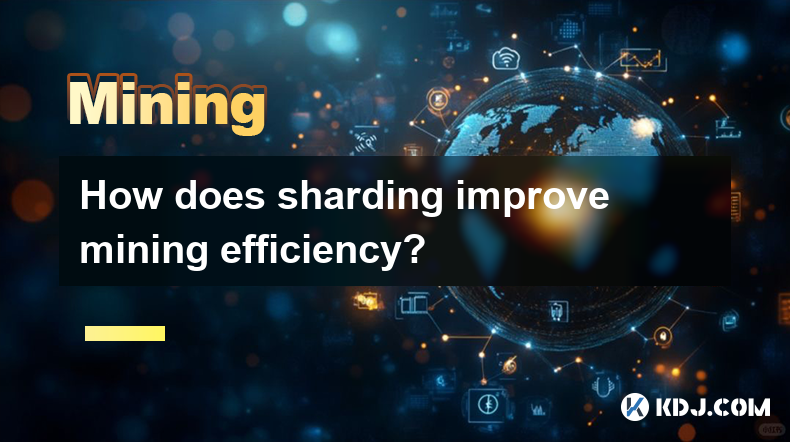
Sharding is a significant technological advancement in the realm of blockchain and cryptocurrencies, particularly aimed at enhancing the scalability and efficiency of mining operations. By breaking down a blockchain network into smaller, manageable pieces called shards, sharding allows for parallel processing of transactions and blocks. This article delves into how sharding improves mining efficiency, exploring its mechanisms, benefits, and practical implications within the cryptocurrency ecosystem.
Understanding Sharding in Blockchain
Sharding is a database partitioning technique that splits a blockchain's entire network into smaller segments, or shards. Each shard contains its own independent state and transaction history, allowing it to process transactions and execute smart contracts autonomously. This division of labor means that instead of every node on the network processing every transaction, nodes can focus on the transactions within their assigned shard.
The primary goal of sharding is to increase the throughput of the blockchain, enabling it to handle more transactions per second (TPS). By distributing the workload across multiple shards, the network can process transactions in parallel, significantly reducing the time required to confirm transactions and add them to the blockchain.
How Sharding Enhances Mining Efficiency
Mining efficiency is directly impacted by sharding through several mechanisms. Firstly, sharding reduces the computational load on individual nodes. In a non-sharded blockchain, every miner must process every transaction, which can be resource-intensive and time-consuming. With sharding, miners only need to process transactions within their assigned shard, allowing them to operate more efficiently.
Secondly, sharding increases the overall capacity of the network. By enabling parallel processing, the network can handle a higher volume of transactions, which means miners can potentially mine more blocks in the same amount of time. This increased throughput can lead to higher rewards for miners, as they can process and validate more transactions.
Lastly, sharding can reduce the energy consumption associated with mining. Since miners are only processing a subset of the network's transactions, they require less computational power and, consequently, less energy. This can make mining more sustainable and cost-effective, particularly for smaller miners who may not have access to large-scale mining operations.
Practical Implementation of Sharding in Mining
Implementing sharding in a mining context involves several steps and considerations. Here's a detailed look at how miners can adapt to a sharded blockchain:
Choose a Sharded Blockchain: Miners must first select a blockchain that supports sharding, such as Ethereum 2.0 or Zilliqa. These blockchains have implemented sharding to improve scalability and efficiency.
Set Up Mining Software: Miners need to configure their mining software to work with the sharded blockchain. This may involve updating existing software or installing new software specifically designed for sharded networks.
Assign to a Shard: Once the software is set up, miners will be assigned to a specific shard. This assignment is typically managed by the blockchain's consensus mechanism, which ensures an even distribution of miners across shards.
Process Transactions: Miners will then begin processing transactions within their assigned shard. They will validate transactions, create blocks, and add them to the shard's blockchain.
Communicate with Other Shards: While miners primarily focus on their shard, they must also communicate with other shards to ensure the overall integrity of the network. This involves cross-shard communication protocols that allow for the transfer of assets and data between shards.
Earn Rewards: Miners earn rewards for successfully mining blocks within their shard. These rewards can be in the form of the blockchain's native cryptocurrency or transaction fees.
Benefits of Sharding for Miners
Sharding offers several benefits for miners, enhancing their overall efficiency and profitability. One of the most significant advantages is the reduced computational load. By only processing transactions within their shard, miners can use less powerful hardware, which can lower the entry barrier for new miners and make mining more accessible.
Another benefit is the potential for increased rewards. With sharding, the network can process more transactions, leading to more blocks being mined and more rewards being distributed. This can be particularly beneficial for miners who operate on a smaller scale, as they can still earn competitive rewards without the need for large-scale mining operations.
Additionally, sharding can improve the security of the network. By distributing the workload across multiple shards, the network becomes less vulnerable to attacks, as an attacker would need to compromise multiple shards simultaneously to disrupt the network. This increased security can provide miners with greater confidence in the stability and reliability of the blockchain.
Challenges and Considerations
While sharding offers significant benefits, it also presents several challenges and considerations for miners. One of the main challenges is the complexity of managing a sharded network. Miners must be able to navigate the intricacies of cross-shard communication and ensure the integrity of their shard's blockchain.
Another consideration is the potential for uneven distribution of mining power across shards. If certain shards attract more miners than others, it could lead to imbalances in the network's overall performance and security. Miners must be aware of these dynamics and adapt their strategies accordingly.
Furthermore, the transition to a sharded blockchain may require significant investment in new hardware and software. Miners must carefully evaluate the costs and benefits of adopting sharding and ensure that they have the resources and expertise to make the transition successfully.
Frequently Asked Questions
Q: Can sharding be implemented on any blockchain?
A: Sharding is a complex technology that requires significant changes to a blockchain's architecture. While it can be implemented on many blockchains, it is not suitable for all. Blockchains with simpler architectures or those that prioritize other features, such as privacy, may find it challenging to implement sharding effectively.
Q: How does sharding affect the decentralization of a blockchain?
A: Sharding can potentially impact the decentralization of a blockchain, as it requires nodes to focus on specific shards rather than the entire network. However, if implemented correctly, sharding can maintain or even enhance decentralization by distributing the workload more evenly across the network.
Q: What are the risks associated with sharding for miners?
A: The main risks for miners include the complexity of managing a sharded network, potential imbalances in mining power across shards, and the costs associated with transitioning to a sharded blockchain. Miners must carefully assess these risks and ensure they have the necessary resources and expertise to navigate them.
Q: How does sharding impact the security of a blockchain?
A: Sharding can improve the security of a blockchain by distributing the workload and making it more difficult for attackers to compromise the network. However, it also introduces new security challenges, such as the need for robust cross-shard communication protocols and the potential for shard-specific vulnerabilities.
Disclaimer:info@kdj.com
The information provided is not trading advice. kdj.com does not assume any responsibility for any investments made based on the information provided in this article. Cryptocurrencies are highly volatile and it is highly recommended that you invest with caution after thorough research!
If you believe that the content used on this website infringes your copyright, please contact us immediately (info@kdj.com) and we will delete it promptly.
- Synthetic Stablecoin Issuer Ethena Labs Shuts Down Operations in Germany
- 2025-04-16 10:15:20
- Make no mistake – Pulsz slots are top-notch
- 2025-04-16 10:15:20
- Pre-draft, Paige Bueckers Dazzled in a Brown Crystal-embellished Power Suit
- 2025-04-16 10:10:13
- As Q2 begins, crypto markets are showing signs of renewed optimism — and with it, fresh opportunities for strategic investment.
- 2025-04-16 10:10:13
- Top 3 Cryptocurrencies to Buy Right Now (April 15th)
- 2025-04-16 10:05:12
- Ethereum (ETH) Shows Early Signs of Recovery as Whales Accumulate
- 2025-04-16 10:05:12
Related knowledge
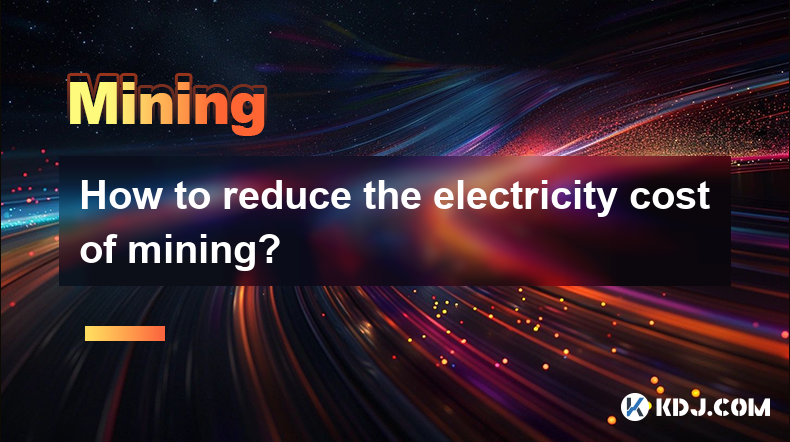
How to reduce the electricity cost of mining?
Apr 16,2025 at 08:42am
Mining cryptocurrencies, particularly Bitcoin, is an energy-intensive process that can lead to significant electricity costs. However, there are several strategies that miners can employ to reduce these expenses and make their operations more cost-effective. In this article, we will explore various methods to minimize the electricity cost of mining. Cho...
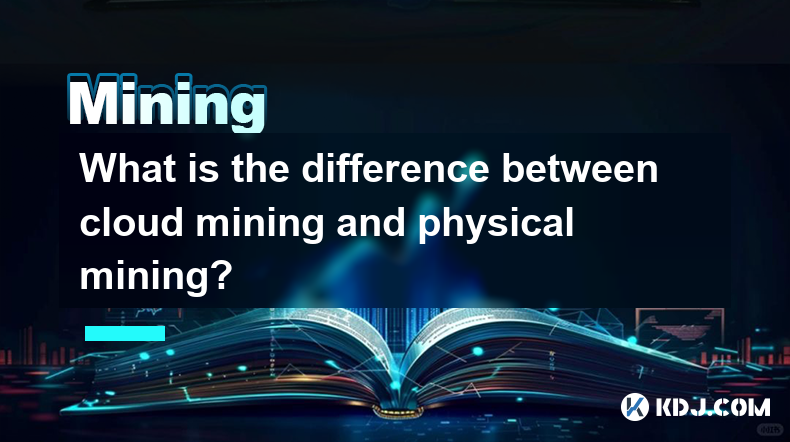
What is the difference between cloud mining and physical mining?
Apr 16,2025 at 01:49am
What is the difference between cloud mining and physical mining? In the world of cryptocurrencies, mining is the process by which new coins are generated and transactions are verified and added to the blockchain. There are two primary methods of mining: cloud mining and physical mining. Understanding the differences between these two approaches can help...
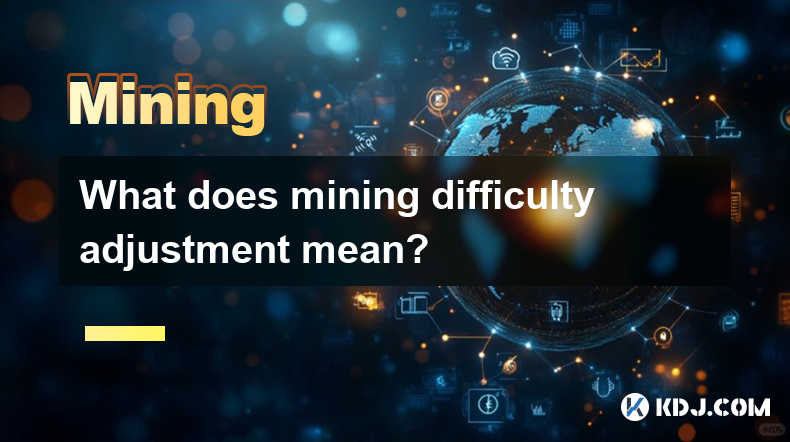
What does mining difficulty adjustment mean?
Apr 16,2025 at 12:42am
What does mining difficulty adjustment mean? Mining difficulty adjustment is a crucial mechanism in blockchain networks, particularly in Proof of Work (PoW) systems like Bitcoin. It ensures that the rate at which new blocks are added to the blockchain remains consistent, despite fluctuations in the total computational power (hash rate) of the network. T...
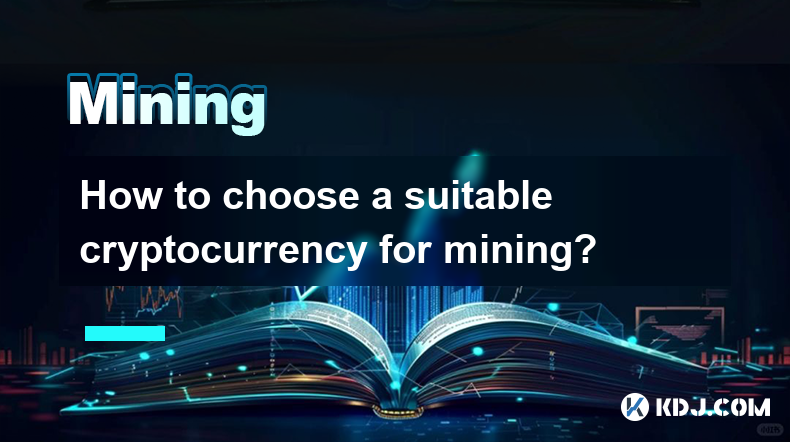
How to choose a suitable cryptocurrency for mining?
Apr 16,2025 at 10:15am
Choosing a suitable cryptocurrency for mining involves several considerations that can impact your profitability and efficiency. Mining cryptocurrencies can be a rewarding venture, but it requires careful planning and research. In this article, we will explore the key factors to consider when selecting a cryptocurrency for mining, ensuring you make an i...
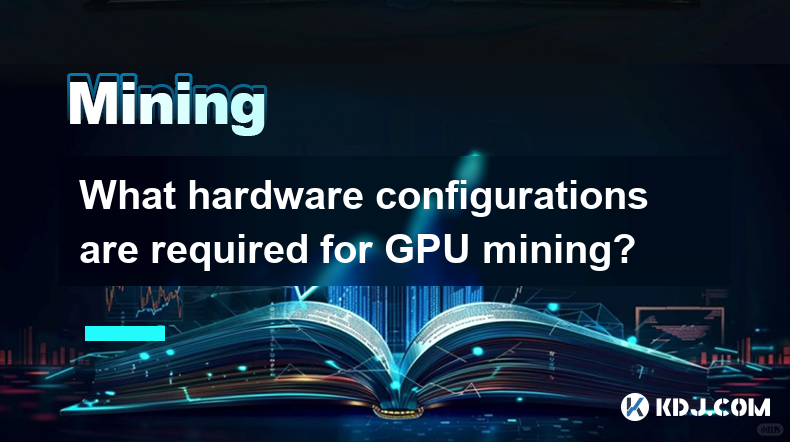
What hardware configurations are required for GPU mining?
Apr 16,2025 at 09:21am
GPU mining has become a popular method for cryptocurrency enthusiasts to mine various cryptocurrencies, such as Ethereum, Ravencoin, and others. To successfully engage in GPU mining, it is essential to understand the hardware configurations required to maximize efficiency and profitability. This article will delve into the specifics of what you need to ...
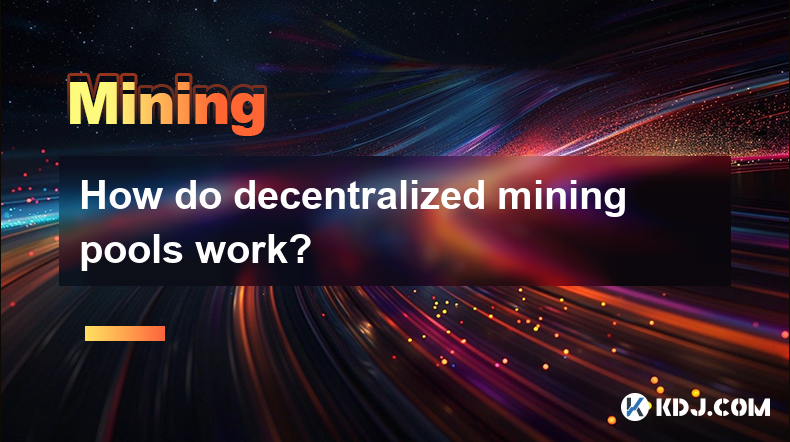
How do decentralized mining pools work?
Apr 16,2025 at 05:42am
Decentralized mining pools represent a significant evolution in the world of cryptocurrency mining, offering a more democratic and transparent approach compared to traditional centralized pools. In this article, we will explore the mechanics of decentralized mining pools, their benefits, and how they operate within the cryptocurrency ecosystem. What are...

How to reduce the electricity cost of mining?
Apr 16,2025 at 08:42am
Mining cryptocurrencies, particularly Bitcoin, is an energy-intensive process that can lead to significant electricity costs. However, there are several strategies that miners can employ to reduce these expenses and make their operations more cost-effective. In this article, we will explore various methods to minimize the electricity cost of mining. Cho...

What is the difference between cloud mining and physical mining?
Apr 16,2025 at 01:49am
What is the difference between cloud mining and physical mining? In the world of cryptocurrencies, mining is the process by which new coins are generated and transactions are verified and added to the blockchain. There are two primary methods of mining: cloud mining and physical mining. Understanding the differences between these two approaches can help...

What does mining difficulty adjustment mean?
Apr 16,2025 at 12:42am
What does mining difficulty adjustment mean? Mining difficulty adjustment is a crucial mechanism in blockchain networks, particularly in Proof of Work (PoW) systems like Bitcoin. It ensures that the rate at which new blocks are added to the blockchain remains consistent, despite fluctuations in the total computational power (hash rate) of the network. T...

How to choose a suitable cryptocurrency for mining?
Apr 16,2025 at 10:15am
Choosing a suitable cryptocurrency for mining involves several considerations that can impact your profitability and efficiency. Mining cryptocurrencies can be a rewarding venture, but it requires careful planning and research. In this article, we will explore the key factors to consider when selecting a cryptocurrency for mining, ensuring you make an i...

What hardware configurations are required for GPU mining?
Apr 16,2025 at 09:21am
GPU mining has become a popular method for cryptocurrency enthusiasts to mine various cryptocurrencies, such as Ethereum, Ravencoin, and others. To successfully engage in GPU mining, it is essential to understand the hardware configurations required to maximize efficiency and profitability. This article will delve into the specifics of what you need to ...

How do decentralized mining pools work?
Apr 16,2025 at 05:42am
Decentralized mining pools represent a significant evolution in the world of cryptocurrency mining, offering a more democratic and transparent approach compared to traditional centralized pools. In this article, we will explore the mechanics of decentralized mining pools, their benefits, and how they operate within the cryptocurrency ecosystem. What are...
See all articles























































































